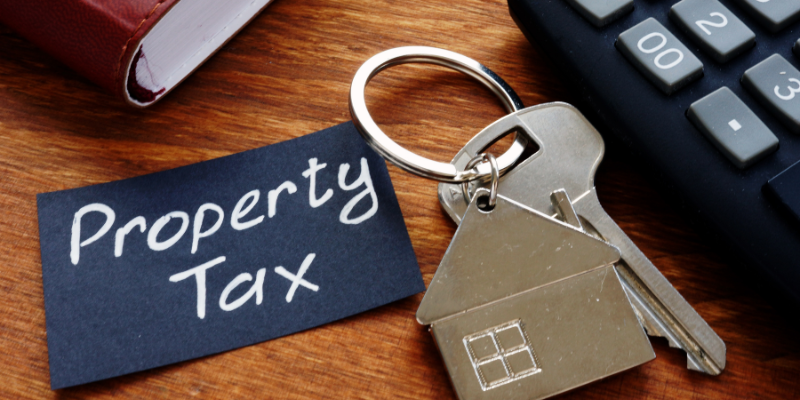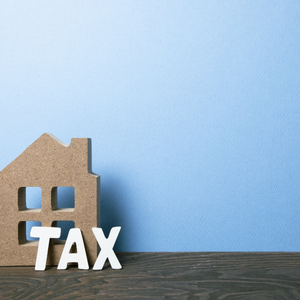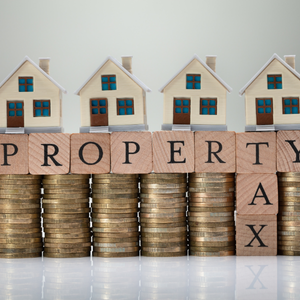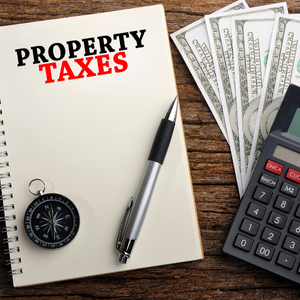
Assessing the intricacies of San Antonio, Texas, property tax rates can seem overwhelming, but homeowners need these numbers to appropriately budget. We Buy ALL Houses San Antonio provides valuable insights and resources to help you navigate these complexities with confidence. This guide gives a general overview of property taxes in San Antonio, summarizing key elements, state, local, and regional comparisons, and basic assessors’ law. Understanding the elements that drive your rates and tax obligations will help you better plan your finances and property future. This guide will help you understand property taxes in San Antonio and the factors that will help you invest in Texas.
Understanding Property Tax in San Antonio
Texas isn’t just San Antonio’s real estate opportunities or growing economy. Culture and vibrant economic growth are only surpassed by understanding and navigating property taxes. The San Antonio real estate estate market is reflected by and covers the economy and the local services funded by property taxes. The following guide provides insight into how property taxes is determined encouraged and the responsibilities of the tax assessor-collector in his role of managing and maintaining the property taxes. Hopefully providing the homeowner a greater understanding of the complexities of property taxes in Texas.
How Property Tax Rates Are Determined

Property owners in San Antonio should know how property taxes are calculated. School districts, counties, municipalities, and other local taxing authorities set these rates to provide education, public safety, and other community services. Every year, local officials try to strike a balance by estimating property values, reviewing revenue needs, and determining the debt that property taxes should cover, while ensuring that taxes do not overburden homeowners. The county appraisal district assesses the property in the county to determine the fair market value, which then becomes the basis for property taxation.
Chargeable property value fluctuates, and so do property taxes. However, exemptions for veterans, for seniors, and for individuals with disabilities do try to alleviate the cost of homeownership. Public participation in hearings about proposed tax rates demonstrates the community’s interest in the tax system and values the local services provided. Knowledge of how tax rates are set and the economic factors affecting them will prepare San Antonio homeowners for shifting costs and help them become active participants in local tax rate governance.
The Role of the Tax Assessor-Collector in San Antonio, TX
In San Antonio, the tax assessor-collector is pivotal to property tax administration and collection. This position entails calculating property taxes due, sending out tax bills, and recording and updating property ownership records, along with the property’s condition. Assessor-collectors work with county appraisal districts to incorporate the value changes for properties to determine equitable and reasonable tax liability. Assessor-collectors also handle the administration of tax exemptions, such as homestead, senior, and veteran, which considerably lessens the tax liability of property owners, thereby assisting them in affording a home.
In addition to tax collection, assessor-collectors interface with local governments and the state on behalf of the people. They facilitate the collection of taxes due and allow for payment in installments to distressed property owners. This position entails public service as the assessor-collector explains the community benefits funded by taxes due. Therewith, in devoted public service, the assessor-collector’s office fosters community trust and confidence in property tax collection systems in San Antonio.
| Component | Description | Impact | Tax Rate |
|---|---|---|---|
| Appraisal | Valuation of properties to determine taxable value | Influences assessed property tax amount | Varies based on property type |
| Exemptions | Reductions available for certain individuals or properties | Lowers overall tax liability | Set by local government policies |
| Tax Rate | Directly affects the total property tax billed | Directly affects total property tax billed | Subject to annual adjustments |
| Assessment Process | Conducted by the tax assessor’s office | Ensures fair and accurate taxation | Guided by state and local regulations |
The most salient features of San Antonio’s property tax system are presented in this table. It clarifies the influence and functions of appraisals, exemptions, rates, and assessments in the property tax discourse. It provides a robust foundation for discussions about how property taxes are calculated.
Factors Influencing San Antonio Property Tax Rate
Understanding how property taxes work in San Antonio includes understanding what drives the differing rates. One of the major factors is the influence of the school districts, which heavily determines the property tax rates in Bexar County. The location and boundaries of the districts, such as Comal ISD and Northside ISD, determine what homeowners will owe. Moreover, looking at the different rates in property taxes across Bexar County helps in knowing the region’s differences and spatially helps homeowners plan their budgets. Knowing all of this empowers property owners in managing their taxes.
Impact of School Districts on Tax Rates in San Antonio, TX
Comal ISD and Northside ISD are examples of school districts that generate and allocate public education funds and significantly influence property taxation in San Antonio and Bexar County. Each district establishes its own tax rate for education program funding, facilities upkeep, and operation expenses. As state funding shifts from year to year, property taxes become pliable and much-needed revenue for schools. Ultimately, districts’ tax-rate disparities reveal diverse educational pursuits and priorities that are further shaped by the demographics and economic conditions of the districts’ communities. For example, Northside ISD communities tend to uplift their school tax rate to sustain top-tier programs and facilities, while Comal ISD, as a cross-county jurisdiction, may generate mixed rate structures that are location dependent.
For property owners, educating oneself about which district their property resides in is of great importance since it plays a prominent role in the calculation of tax liabilities. Property owners attending school board meetings may influence rate-setting by posing questions on the local budget. Furthermore, the school tax rate changes can be somewhat offset by property tax exemptions on the education costs. San Antonio property owners who monitor the budget and spend the time to familiarize themselves with the district will know their expected school tax rate changes and their possible influence on district funding.
Comparing Property Tax Rates Across Bexar County

The differences in property tax rates in Bexar County help understand the workings of the local economy, how money is spent on infrastructure, and how boundaries of different jurisdictions affect the local geography of finance. Each school district—Bexar ISD, Comal ISD, and Northside ISD—contributes to the differentials by setting its own tax rates. Urban areas, especially San Antonio, impose high tax rates, probably due to the range of services and infrastructure available. In contrast, rural, unincorporated districts—where services are minimal, no development exists, and people go to seek affordable housing—impose lower rates. This is why, for investors and prospective homeowners, tax rates are as significant as property values.
Bexar County’s overlapping, multiple jurisdictions—including towns, school districts, and special utility districts—profoundly impact the aggregation of all tax liabilities. Researching multiple districts becomes even more critical when San Antonio’s city limits are compared to its boundaries. San Antonio’s city limits are most likely to offer increased tax rates. Luckily, homestead, veterans, and seniors exemptions lighten the burden significantly. Local tax knowledge, participation in public budget meetings, and understanding the tax climate in the region are crucial for predicting and controlling the property tax burden in the County’s urban and rural areas.
Building on the understanding of the Bexar County property tax landscape, the following local strategies for tax navigation are practical:
- Engage in local initiatives and apply for homestead exemptions to relieve pressure on property taxes. These options can considerably decrease your property’s taxable value.
- Tax buyers should reference historical tax rates and recent changes in local tax policies to understand tax implications before they purchase property.
- Employ comparison tools to understand how tax rates differ in various jurisdictions. These tools can help buyers assess property opportunities based on tax rates.
- Engage in community advocacy by attending council meetings, joining pertinent organizations, and contributing to community initiatives to promote and lobby for tax reform and resource equitable distribution in local budgets.
- Monitor changes in property tax regulation on your local county website, or sign up for e-mail notifications with an up-to-date tax advocacy organization.
- Keep recent tax rates archived in the county assessor’s office to reference and inform policy conversations and tax advocacy efforts, so you know any new changes, should they occur.
- Tax officials appreciate short, direct messages. Ask specific questions, and keep evidence of your inquiries in a file to support the tax policy changes you advocate for.
- Know the value of tax abatements and other tax relief policies. These policies reduce fiscal burdens where applicable to relieve property taxes.
These points will guide readers in comprehensively managing property tax considerations.
Strategies for Managing Your Tax Obligations in San Antonio, TX
In San Antonio, property tax obligations can be managed successfully through a combination of foresight and action. While various taxing entities set tax rates, your ability to save significant amounts as a homeowner depends on understanding these highly variable rates. The cornerstone of tax liability management involves adopting property tax reduction strategies, accurate property assessment, and maximization of available tax exemptions. The nuances of effective tax rate harmonization and your willingness to communicate proactively with your tax assessor–collector strongly contribute to the management of your tax duties and the equity in your home. If you’re looking to sell your home for cash in San Antonio or in nearby cities, understanding how property taxes impact your home’s value can also help you make smarter financial decisions before listing or closing a sale.
Tips for Lowering Your Property Tax
San Antonio Residents Can Impact Their Property Taxes. Applying for exemptions regarding open space, homestead, senior, veteran, or disability exemptions to the property can lower the taxable property value. Exemptions reduce the property tax financial burden and encourage owners to retain the property for long periods. Homeowners must check their exemption status with the local tax assessor-collector to ensure the right ones are being applied, and all exemptions are claimed. Homeowners who assess their property value and compare it to property sales in their area can identify discrepancies between the tax assessor’s bill and the property tax bill and claim them as appeals.
Rates can be impacted by participation in local tax forums. Local hearings and certain community-to-community development and infrastructure projects’ periodic reviews help anticipate tax rate changes. The county also offers installment payment plans for property tax constituents to help with payment delays. Planned payment, active participation in local tax hearings, and civic engagements help reduce property tax burdens, and owners retain their property.
Understanding the Importance of Accurate Assessments in San Antonio, TX

In San Antonio, equitable and fair taxation requires attention to property tax equity and balance. Each year, the appraisal district assigns market-value estimates to every property based on the previous year’s appraisal and current local market trends. Value estimates are important because they are the basis for the property tax bills. Assessments that are too high or too low relative to true market value, therefore, can distort the property owner’s equity tax burden. Moreover, keeping assessments current and precise mitigates abrupt tax increases caused by market booms and value estimates that are too low or dated. Tax assessments that are too low or dated can mitigate abrupt tax increases owing to market booms and value estimates that are too low or outdated.
Equity and balance within the tax appraisal system are further achieved because local governments can depend on predictable assessments for budgeting and allocation of public expenditures. These include schools, roads, and emergency services across the disconnected communities of unincorporated Bexar County. If you are looking to sell your home for cash in Terrell Hills or in nearby cities, understanding how tax assessments affect property value can help you make informed decisions and maximize your return.
Besides protecting one’s finances, completing, understanding, and participating in the assessment processes enhances civic and community engagement. Homeowners who remain engaged and informed can rectify mistakes early, anticipate tax changes, and engage in local conversations around taxes. Correct assessments serve the individual and the community by providing visibility and accountability and equitably distributing community resources. Monitoring assessments and complying with tax laws or regulations permits San Antonio citizens to protect their economic interests and invest in an equitable local economy.
FAQs
How are property tax rates determined in San Antonio, Texas?
In San Antonio, property tax rates are established by local authorities, including school districts, municipalities, and counties. These authorities set rates according to their budgetary needs to fund services such as education, infrastructure, and public safety.
Who is responsible for property tax management in San Antonio?
San Antonio’s tax assessor-collector processes and collects property taxes. This official computes taxes and keeps tax administration records and coordinates with appraisal districts to obtain accurate property evaluations.
What role do school districts play in determining property tax rates?
As budgetary needs vary across school districts, so do the property tax rates set by districts such as Comal ISD and Northside ISD. The rates are necessary to finance essential services in education.
Are there any exemptions available for property owners in San Antonio?
Homesteads, seniors, veterans, and persons with disabilities are eligible for exemptions. Such exemptions will lower the taxable value of the property, reducing the burden of paying taxes.
How can homeowners challenge an inaccurate property assessment?
Providing independent appraisals as evidence allows homeowners to contest assessments at the tax assessor-collector’s office. This process guarantees equitable taxation that corresponds to real-time market values.
Do you need to sell your home? Sell quickly, avoid costly repairs, or prefer a hassle-free sale. Understanding your Property Tax Rate is an important part of planning your next move, as it can affect your home’s overall value and net proceeds from the sale. We Buy ALL Houses San Antonio is here to help. We offer fair cash offers, handle all the details, and make the process seamless. Ready to sell or have questions? Contact us at (210) 300-3307 for a no-obligation offer. Get started today!
Helpful San Antonio Blog Articles
- San Antonio, TX, Neighborhood Map
- Average Cost to Sell a House in San Antonio, TX
- How to Sell a House in Probate in San Antonio, TX
- San Antonio, TX Property Tax Rate Guide
- Paperwork for Selling a House by Owner in San Antonio, TX
- Can You Sell a House in Foreclosure in San Antonio, TX?
- Selling a Home That Needs Repairs in San Antonio, TX
- How to Sell a House Without a Realtor in San Antonio, TX
- How to Sell an Inherited House in San Antonio, TX

